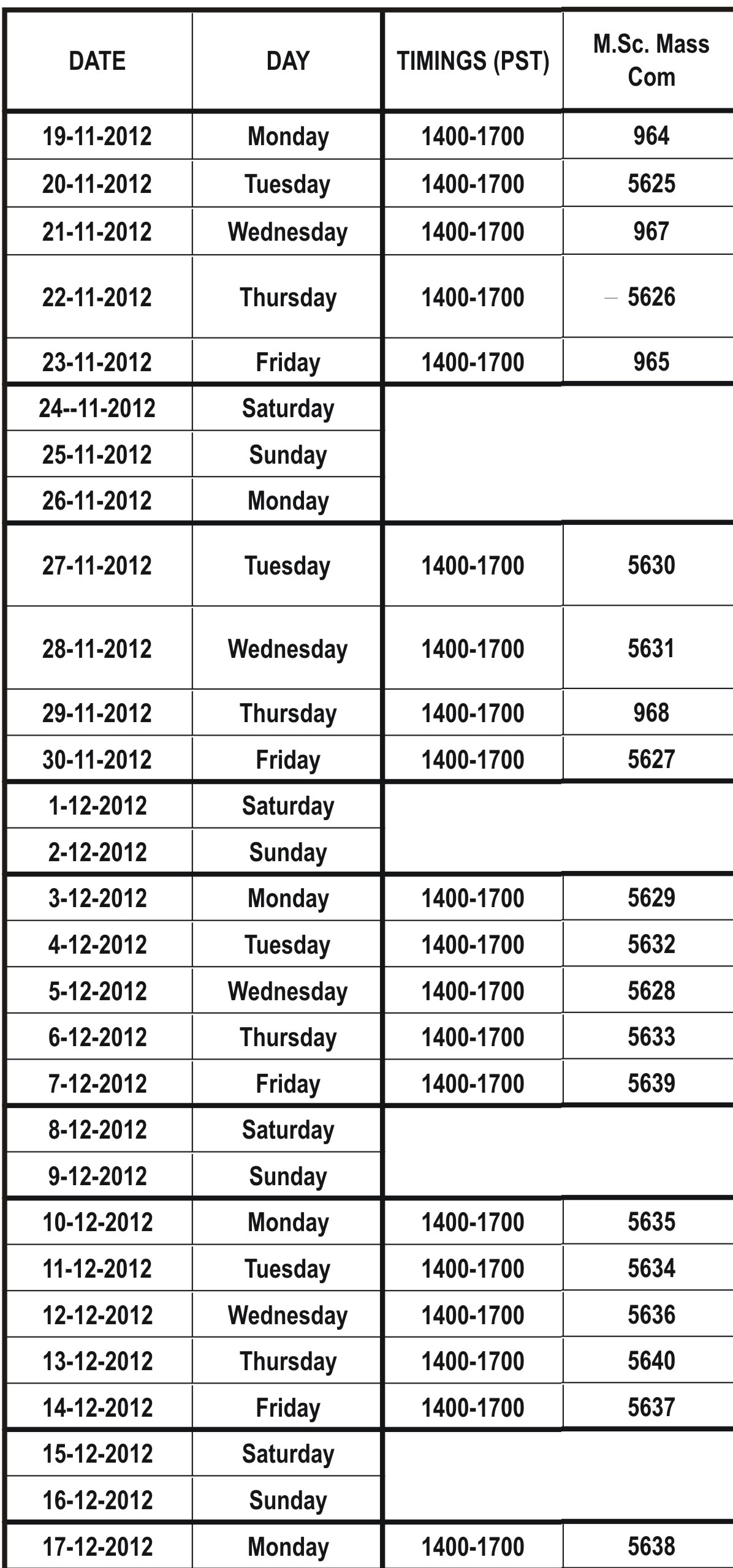Allama Iqbal open University, Islamabad Department of Mass Communication Datesheet of M. Sc. Mass Communication Autumn 2012 Semester 3 Sr. Code Day Date From To 1 5635 MON 10/12/12 1400 1700 2 5636 WED 12/12/12 1400 1700 3 5637 FRI 14/12/12 1400 1700 4 5638 MON 17/12/12 1400 1700
Msc. Mass Comm First Semester Workshop Ceremony 2011
A ceremony was held on 4th November 2011 on end of First Semester Workshops of MSc. Mass Communication in Arts Council Hall Gujranwala. A ceremony was held on 4th November 2011 on end of First Semester Workshops of MSc. Mass Communication in Arts Council Hall Gujranwala.
Visual Editing: Principles and Techniques
Visual Editing: Principles and Techniques Videotape cassettes are factory sealed. The tape is never touched by human hands, nor should it be. A smudge of dirt or even the skin’s natural oils can damage not only the tape but also the recording and playback circuitry through which it passes. All editing is done electronically. The film is edited manually. The way tape works is this: sound and picture are encoded in magnetic particles on the tape’s surface by the record circuitry. Editing and Playback circuitry read this code to reconstitute the images and sounds. The sound and picture are on separate tracks, enabling tape editors to rearrange them independently of one another. « Tape gear is constantly being improved, being made lighter, more light- sensitive, more shockproof, more weather resistant and more flexible. However, the basic components remain the same and TV journalists must be familiar with them in order […]
Cable Television
Cable Television Cable Television is a system for distribution of audiovisual information via coaxial cable. The system includes its signal receiving amplifying and controlling equipment and signal origination equipment. Since this system involves physical network and distribution of cables it is only operatable under government permission. Cables may be hurried underground or hanged with the poles. Amplifiers are placed to boost the signals at intervals along the cable. The essential features of Cable Television system < include headend for amplifying and processing signals for cable transmission, coaxial cable to carry the signals to subscribers terminal, equipment connected to subscribers' TV receivers and antennas. Headend, is the source of transmission. A studio for programme making can also be added with the headend. The basic difference between cable TV and broadcast TV is that the television signals are transmitted over cable rather than broadcast. Cable TV and CCTV (close circuit television) have […]
International challenges to TV CHANNELS
International challenges to TV CHANNELS Broadcast journalists have become accustomed to technological change. They have accommodated their working habits and technique to suit, successively, the switch from black and white to colour, the switch from film to videotape, the arrival of live transmission, and the advent of computer-assisted electronic graphics and titles. But none of this technological advance encompasses such through changes of environment and procedure as the coming computerization process. Television is quite different from radio. Expert report that there will three kinds of technological advance which, in greater or in lesser measure, will alter the nature of TV journalists work, both in the studio and in the field. The first advance already nearing perfection, involves the change over from the present analog system of television to the new digital system. The analog TV system signal is produced by waves whose frequency and intensity re-create a picture analogous to […]
Television Entertainment Programmes
Television Entertainment Programmes: Television is a tribute to three broad functions: to inform the people, to entertain the people and to educate the people. Out of these three, the entertainment element occupies largest share in terms of time and resources. Television is basically an “entertainment – oriented” medium. Even the education and information elements contain a touch of entertainment in-‘order to capture the attention of its target viewers. Today television plays and music shows attract hundreds of viewers who sit > before mini screen, sometimes to kill time – sometimes to satisfy their internal instinct. Obviously we love being told a story – to get out ourselves escape – to dream of being bigger, stronger, braver — to risk life, stalk a killer — all this.safely, secretly in the intimate closeness of our own television screen. All television broadcasts are either targeted towards general public (the masses) or to a […]
